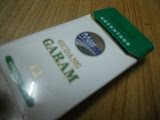The effective neutron multiplication factor, k, is the average number of neutrons from one fission that cause another fission. The remaining neutrons either are absorbed in non-fission reactions or leave the system without being absorbed. The value of k determines how a nuclear chain reaction proceeds:
~ k < 1 (subcriticality): The system cannot sustain a chain reaction, and any beginning of a chain reaction dies out over time. For every fission that is induced in the system, an averagetotal of 1/(1 − k) fissions occur.
~ k = 1 (criticality): Every fission causes an average of one more fission, leading to a fission (and
power) level that is constant. Nuclear power plants operate with k = 1 unless the power level is being increased or decreased.
~ k > 1 (supercriticality): For every fission in the material, it is likely that there will be "k" fissions
after the next mean generation time. The result is that the number of fission reactions increases exponentially, according to the equation e(k − 1)t / Λ, where t is the elapsed time. Nuclear weapons are designed to operate under this state. There are two subdivisions of supercriticality: prompt and delayed.
When describing kinetics and dynamics of nuclear reactors and also in the practice of reactor operation is used the concept of Reactivity (nuclear), which characterizes the deflection of reactor from the critical state. ρ=(k-1)/k.
In a nuclear reactor, k will actually oscillate from slightly less than 1 to slightly more than 1, due primarily to thermal effects (as more power is produced, the fuel rods warm and thus expand, lowering their capture ratio, and thus driving k lower). This leaves the average value of k at exactly 1. Delayed neutrons play an important role in the timing of these oscillations.
In an infinite medium, the multiplication factor may be described by the four factor formula, in a non-infinite medium, the multiplication factor may be described by the six factor formula.
The effective multiplication factor may be expressed mathematically as shown below:







0 comments:
Post a Comment